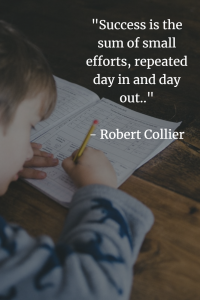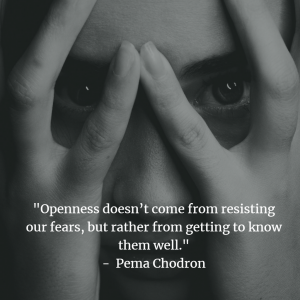Communication

Communication is an essential value and skill that everyone needs. Typically, when people talk about communication, they refer to speaking, listening, and sometimes body expressions. However, communication encompasses much more than these aspects; it involves symbolic representation and conceptual understanding in information exchange.
Communication serves as a representational and symbolic system that conveys knowledge, thoughts, beliefs, processes, and perceptions, among other human information processing forms, with the intention of passing or receiving a message. It shapes thoughts and perceptions of the world and facilitates the representation of thoughts and knowledge. Communication is typically governed by a model involving a sender, a receiver, and a (verbal or nonverbal) message, which is encoded by the sender and decoded by the receiver. It occurs on an exchange platform where a speaker sends a message, and the listener receives and responds, thus building a connection that allows for the exchange of thoughts, feelings, and ideas, ultimately leading to mutual understanding. This enables individuals involved to create, maintain, and change relationships and themselves.
The challenge in nurturing your child’s communication lies in its dual impact on both the child and you. Effective communication fosters feelings of love and support, building trust and creating social bonds, often accompanied by the release of oxytocin, a hormone associated with positive emotions. Conversely, poor communication, both as a value and a skill, can have lasting detrimental effects on your child, potentially resulting in fractured relationships, family estrangement, and emotional loneliness. Thus, nurturing effective communication skills in your child is crucial for emotional and social development.
It is essential to teach your child that communication extends beyond mere transmission and reception of messages. While everyday communication often revolves around exchanging information and negotiating tasks, such as discussing school or household chores, it is a complex interplay of knowledge, thoughts, beliefs, and perceptions encoded within the message. You must emphasise the importance of communication in developing, creating, maintaining, and altering relationships, as it shapes our interactions and connections with others.
Drawing on Friedemann Schulz von Thun’s Four-Sides model of communication, we uncover the multi-dimensional nature of every message, which comprises four key facets: factual information, self-revelation, relational aspects, and appeals.
- Fact: This facet encapsulates data, facts, and statements—essentially, the informational essence of the message.
- Self-revealing: Here, we divulge insights into ourselves, shedding light on our thoughts, feelings, or beliefs.
- Relationship: This facet conveys your child’s perception of the relationship with the receiver, reflecting their understanding of the connection or interaction.
- Appeal: Representing your child’s intentions or desires regarding the receiver’s response or actions, this facet subtly influences the recipient.
These facets intricately interweave within communication, revealing its complexity and emphasising the challenge of ensuring accurate reception and interpretation. Misunderstandings often stem from variances in perception and interpretation between the sender and the receiver, underscoring the necessity for clear and effective communication. However, the challenge lies in ensuring the intended message is accurately decoded, as misunderstandings often arise from differing perceptions and interpretations between sender and receiver. It’s crucial to recognise that effective communication goes beyond mere transmission—it necessitates navigating through the filters of thoughts and emotions on both ends.
Communication Tools
Let’s look at the basic communication tools your child use every day:
- Speaking: Speaking effectively allows your child to be authentic and expressive, fostering connections with others. It’s a powerful tool for expressing ideas, leadership, and emotions. Encourage your child to focus on conveying content, emotion, and details in their message. Teach your child to avoid personalising issues and instead focus on the situation and facts. Kindness in communication makes people feel cared for and understood. For instance, encourage the use of “I feel” statements in appropriate situations. Example: Instead of saying, “You never clean up after yourself,” try using an I-statement like, “I feel uncomfortable when there is clutter accumulating around our room.”
- Listening: Deep and active listening is crucial for effective communication. Train your child to stay fully engaged when someone is speaking, paying attention to words, tone, gestures, and facial cues. Active listening involves attentively reflecting on what others have said rather than merely preparing a response. Encourage your child to seek clarification when needed and avoid making judgments. Emphasise the importance of being present in the moment, as distractions can hinder communication and connection.
- Empathy: Empathy is essential for positive communication. Teach your child to quiet their mind and focus on the speaker, listening fully and openly. Encourage your child to listen not only to the words but also to understand the underlying emotions and perspectives. Advise against interrupting others when they are speaking, fostering an environment of mutual respect and understanding. Practice empathetic communication at home, providing feedback and guidance to improve empathy skills.
- Nonverbal Positive Communication: Nonverbal communication plays a significant role in conveying positive messages and enhancing understanding. Teach your child to recognise nonverbal cues such as eye contact, body orientation, gestures, and touch. These cues complement verbal communication and reinforce the message being conveyed. Encourage your child to be mindful of their own nonverbal behaviours and to interpret those of others accurately, fostering effective interpersonal connections.
In conclusion, communication plays a pivotal role in navigating change and challenges, particularly in relationships. Cultivating strong communication skills can enable your child to share, learn, respond, and forge lasting bonds with others. Effective communication fosters emotional connections, reduces conflict, and promotes positive problem-solving, ultimately contributing to healthy relationships and emotional well-being.






